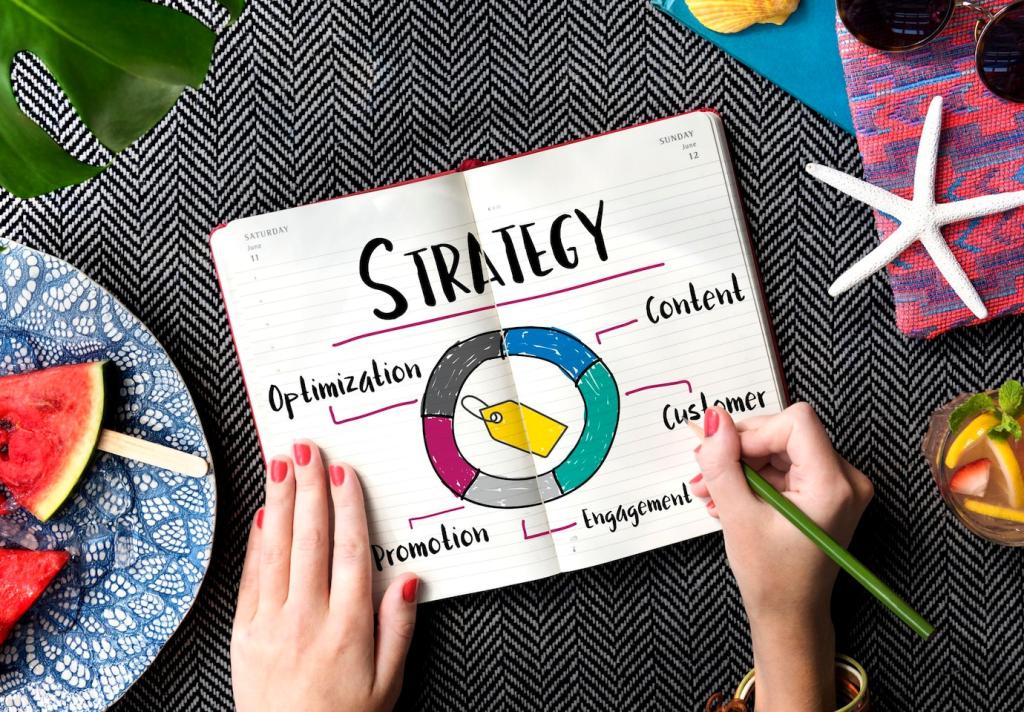Start with Purpose and Vision
Write a concise mission that clarifies who you serve and why you deserve attention, then translate it into tangible audience outcomes. When your mission shows up in product decisions, campaign narratives, and customer onboarding, your framework gains coherence, and your team gains courage to say no to misaligned ideas.
Start with Purpose and Vision
Pick one guiding metric that reflects value delivered, not just activity performed. Think active usage, qualified pipeline, or repeat purchase velocity. Your framework should ladder tactics to that North Star, ensuring weekly actions trace back to real impact. Tell us your candidate metric and we’ll help pressure-test it.







